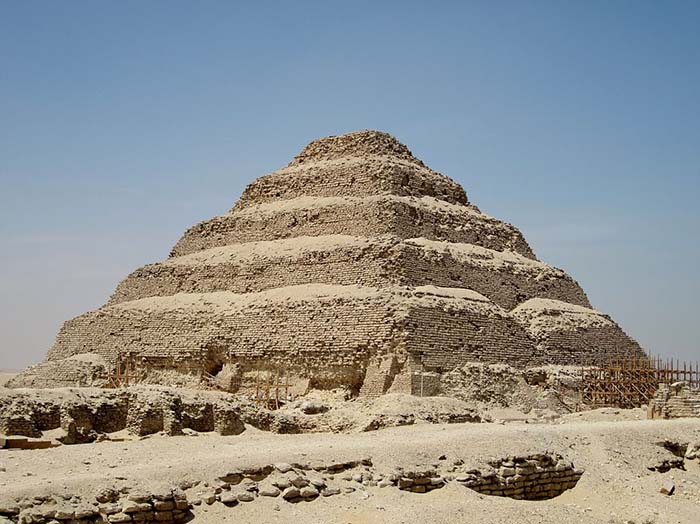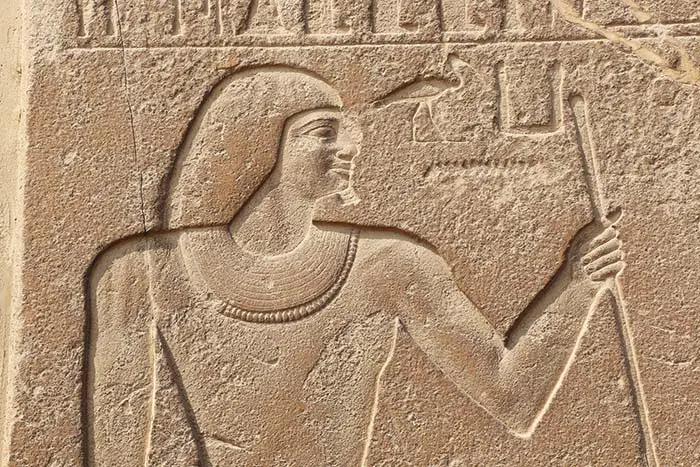Imhotep
There have been many famous viziers in history, but perhaps the most famous is Imhotep of the Third Dynasty. Not only was he chancellor to the pharaoh, he was high priest at Heliopolis, an engineer, a physician, and an architect. He was also an exalted philosopher who was posthumously given divine status and has been called the real father of medicine.
Imhotep’s complete list of titles was:
- Chancellor of the King of Egypt
- First in Line After the King of Upper Egypt
- Doctor
- Hereditary Nobleman
- Administrator of the Great Palace
- Chief Carpenter
- Chief Sculptor
- Builder
- Maker of Vases in Chief
Click here to learn more about Imhotep…

The Step Pyramid, designed by Imhotep
Rekhmire
Serving Thutmose III during the 18th Dynasty, from 1479 to 1425B.C., Rekhmire achieved fame in part because of his tomb, which contains detailed depictions of daily life in the New Kingdom. His tomb also contains his text “The Installation of the Vizier”, which provides insight into the full duties and responsibilities of a vizier and is the only such script known to exist.
Rekhmire served the pharaohs for more than 50 years, but appears to have fallen into the pharaoh’s disfavor when Rekhmire was about 70 years old.
Some scholars speculate that Rekhmire was the pharaoh with whom the Israelites dealt at the time of the great plagues in Egypt; he was in command at that time because the pharaoh was away campaigning. Some stories say he released the Israelites. When the pharaoh learned of this, he was exceedingly displeased, thus Rekhmire’s fall from the pharaoh’s favor.
Ankhu
The son of a vizier, Ankhu served King Sobekhotep II and King Khendjer during the 13th Dynasty. He’s thought to have been approximately 55 years old when serving under King Khendjer. Speculation is that he may have served as vizier to as many as five kings who ruled for only short periods.
The importance of the vizier in maintaining continuity of rule is evident during Ankhu’s term; when several kings were deposed during a short time, the country could have fallen into chaos. It was the responsibility of the ancient Egyptian vizier to ensure that order remained.
With his wife Mereret, Ankhu fathered two sons, Lymeru and Resseneb, who also became viziers. Ahkhu had statues of his parents and himself placed in his tomb; the statue of his mother is one of only a few female statues in his tomb.

Relief of Vizier Kagemni
Facts about the Role of Viziers in History
- Viziers in ancient Egypt served the ancient Egyptian civilization for millennia. They played a crucial role in all aspects of government and sometimes the government maintained order simply by the presence of the vizier.
- Although a prestigious role, it carried great responsibility and few were the functions in which a vizier was not involved.
- Ancient Egyptian viziers needed to be extremely intelligent, very knowledgeable and well educated, and of the highest moral character.
- They needed to be dedicated to serving others, humble, and to always have the best interests of their country at the forefront of their decisions.






































